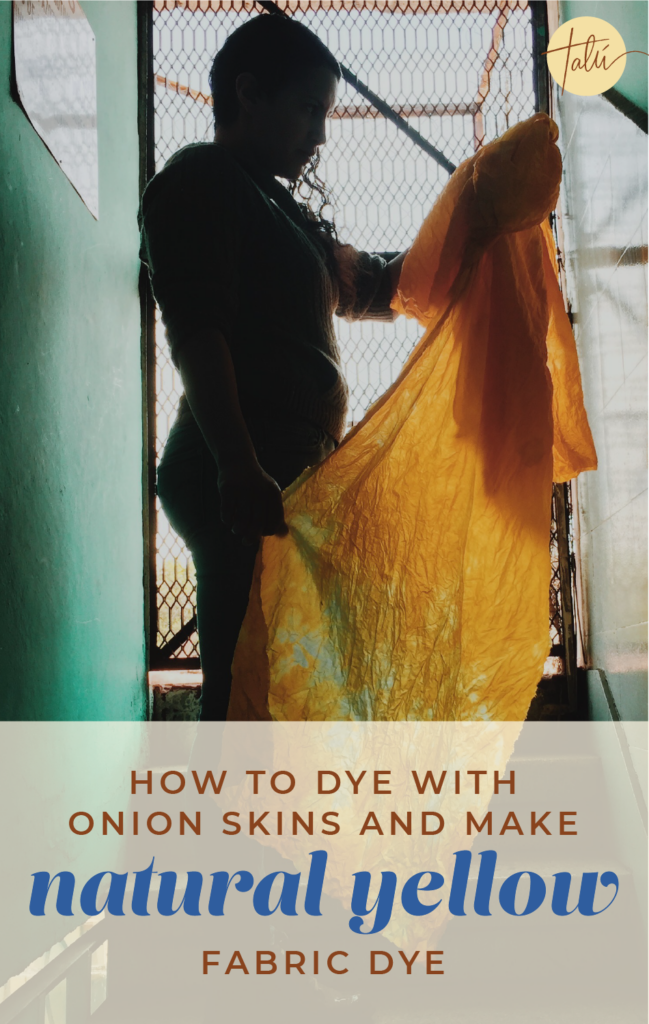There are plenty of reasons to love yellow. Mine? Because it’s joyful.
I love creating natural yellow fabric dye, not only because of the incredible range of hues and saturations, but also because it just makes me happy. Here you’ll learn exactly how to dye with onion skins, naturally.
Yellow is the most abundant colour in nature, representing brightness, joy, and warmth. It’s no surprise, then, that it’s so popular.
Infusing yellow into your style can express your personality and signal that you’re a laid-back, generally happy person.
Because it’s so commonly found outside, there are also many plants you can use to make different yellow hues. One the most people will likely have access to are yellow or red onion skins!
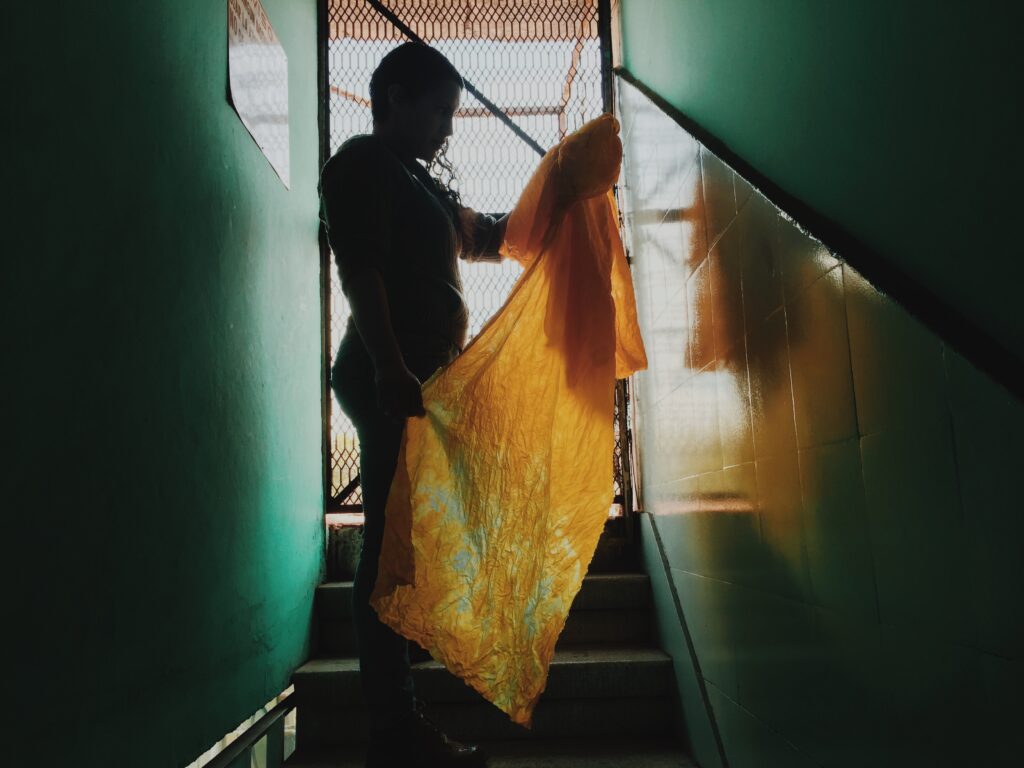
Other sources for creating natural yellow fabric dye
While yellow or red onion skins are common and popular, there are many historical sources of yellow dyestuffs that result in complex, nuanced hues.
If you’re in Europe, you can use:
- Weld (Reselda lutea)
- Dyer’s Greenweed / Dyer’s Broom (Genista tinctoria)
- Dyer’s Buckthorn (Rhamnus saxatilis)
If in Mesoamerica:
- Pericón / Sweetscented Marigold (Tagetes lucida)
- Zacatlaxcalli (Cuscuta tinctoria)
North America:
- Osage Orange (Maclura pomifera)
- Goldenrod (Solidago spp)
- Old Fustic / Dyer’s Mulberry (Maclura tinctoria)
And lastly, Asian sources of yellow dyestuffs:
- Rhubarb (Rheum spp)
- Pomegranate (Punica granatum)
- Saffron (Crocus sativus)
How to dye with onion skins any natural fibres.
For the purposes of this article, we’re going to talk about how to dye with onion skins and make natural yellow fabric dye with the most accessible dyestuff: red or yellow onion skins.
This natural dye will work well with any natural fibre, whether from plants or animals. These include linen, cotton, hemp, bamboo, wool, alpaca, mohair, and silk.

The step by step of how to dye with onion skins and make natural yellow fabric dye.
For this natural dye, take your yellow onions and remove all the dry skin–the parts you wouldn’t eat. You can collect these over time, keep them in a cool, dry place.
You will need:
- Natural fibres, either those that come from plants (linen, cotton, hemp, bamboo, etc.) or animals (wool, mohair, alpaca, silk, etc.)
- Your selected dyestuff (in this example, yellow onion skins)
- A designated dye pot only used for dyeing, never cooking. Can be stainless steel (recommended), aluminium, or unchipped enamel
- Two more bowls or containers used to soak your natural fibres before dyeing and to help you when straining
- A designated wooden or stainless steel spoon, also now retired from cooking activities
- A designated sieve or colander (only used for dyeing)
- A piece of cheesecloth or muslin, for straining
- A designated (only for dyeing) wooden or stainless steel spoon. Or, a wooden stick – the sky’s the limit
- Kitchen scales
How to dye your clothes yellow naturally, step by step:
1- Weigh your dry textiles.
Take the natural fibre clothes or textiles you want to turn yellow, and weigh them while they’re dry. Then write that number down: to make your dye, you’ll need about half the weight of onion skins.
For example, if you’re dying 100g of wool, you’ll need 50g of onion skins.
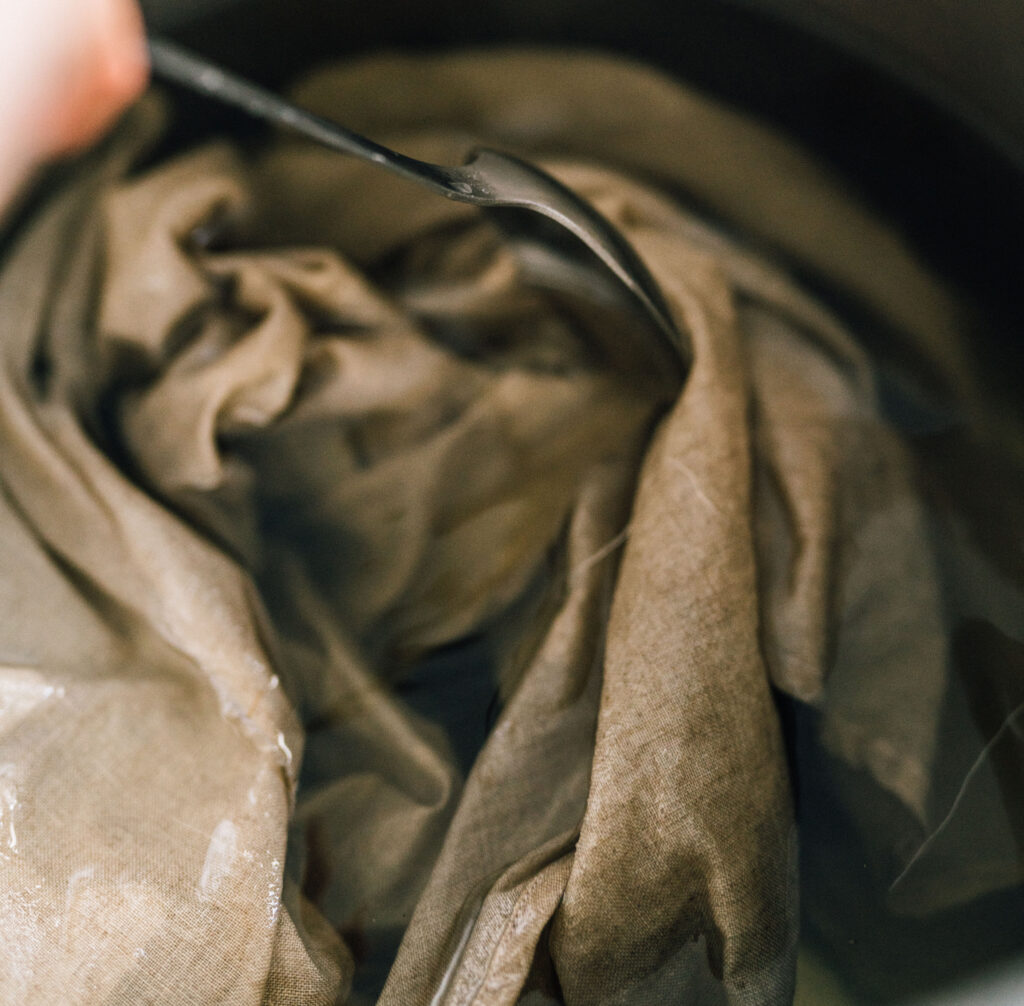
2- Scour and mordant your textiles.
To create more intense colours, and to make them more long-lasting, I recommend you scour and mordant your clothes. I go over this process in detail in my Living Colours with the Five Elements online natural dyeing workshop.
If you want to skip this step, just wash your textile with warm water and plenty of pH-neutral, biodegradable detergent.
Onion skins will still dye textiles yellow beautifully without mordanting. But keep in mind that the final product won’t be as intense or long-lasting as it would be if you had completed this step!
Different textiles require slightly different scour and mordant methods, which I also go over in my workshop.
3- Place your dyestuff in your dye pot and add just enough water to cover it.
If possible, use rainwater, as it has less chemicals and treatments. Using tap water is also fine!
4- Extract the colour from your dyestuffs.
Bring the heat up to a low simmer without boiling for at least one hour.
You can start dyeing right after this, but I recommend you leave your dye materials soaking in the pot overnight with the lid on. That will extract as much colour as possible as the dye cools down to room temperature.
5- Strain your dye material and keep the liquid – your dye.
Strain the contents of your dye pot through your colander and cheesecloth, then transfer the liquid straightaway back into the dye pot. You can compost your leftover dyestuffs or make a second extraction to obtain another, lighter dye.
6-Soak your textiles in water for half an hour.
Your natural fibre clothes or textiles should soak in their own bowl in water for 30 minutes prior to dyeing.
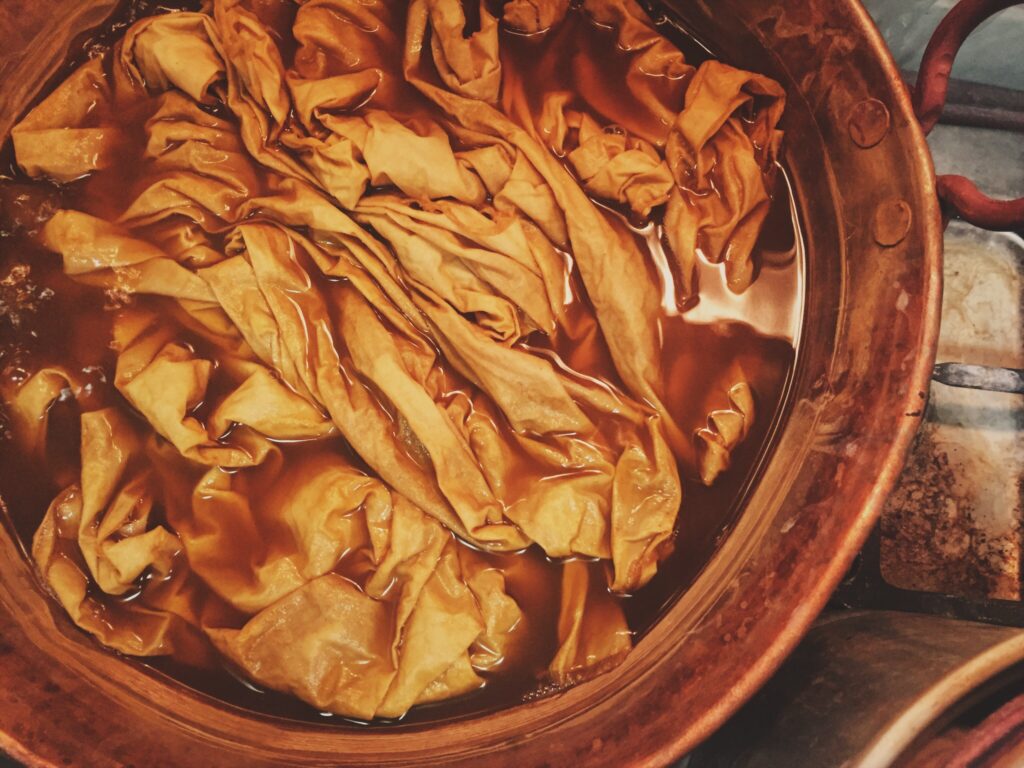
7-Add the wet fibres to the dye pot.
If needed, add more water so the fibres are completely covered in the dye and can move freely.
8- Bring the pot to a low simmer and stir.
Stir gently, but constantly so that the dye is absorbed evenly. The dye bath should never go above 60ºC. It should be steaming, but not bubbling!
9- After one hour, turn off the heat and leave to steep.
One hour after hitting the simmering point, turn off the heat and let the entire pot contents come down to room temperature. If possible, leave everything to steep overnight with the lid on.
10-Rinse and leave to dry.
Rinse your fibres under running water until it runs clear, and then leave them to dry away from direct sunlight. Wool should always be dried flat.
When your clothes are dry, all that’s left is to admire the gorgeous yellow colour you’ve created with just vegetable scraps.
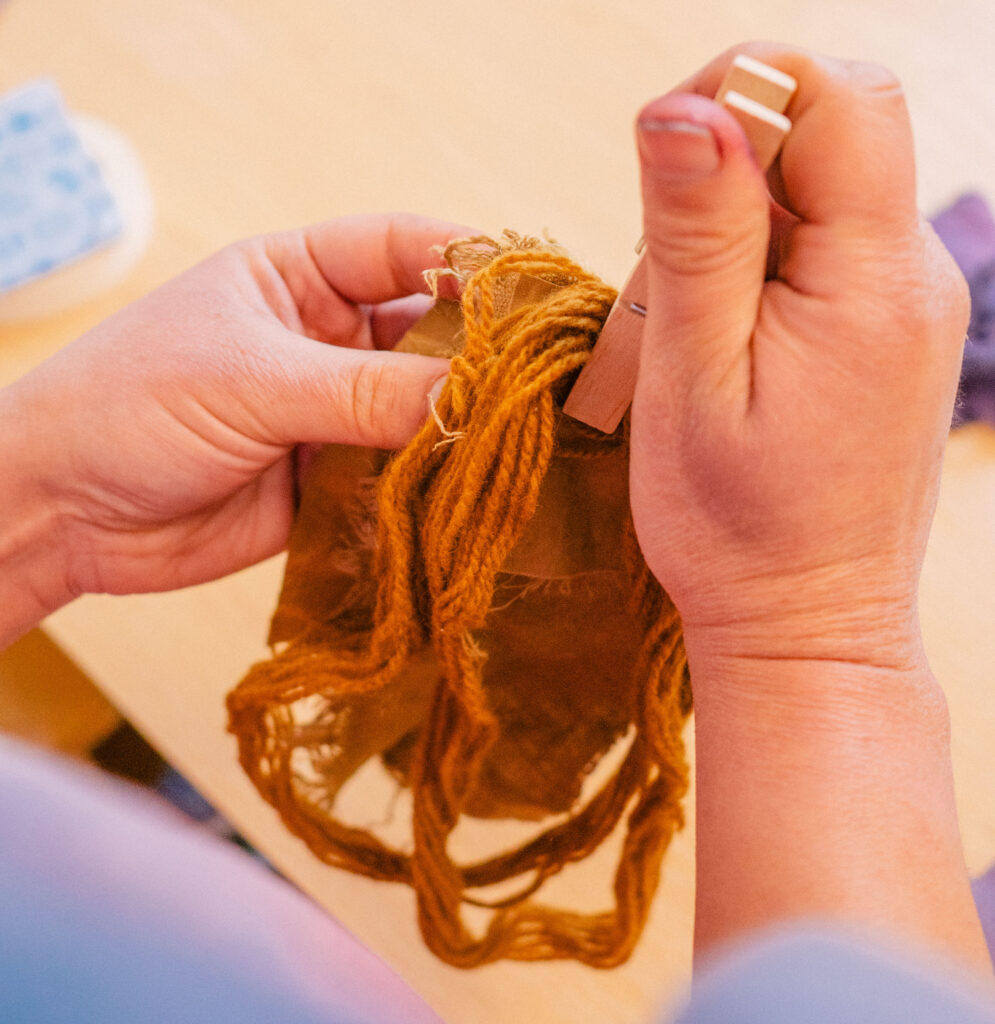
I can teach you everything there is to know about natural dyeing and how to dye cotton, wool, silk, and any other natural fibre.
This first step into dyeing with onion skins to create natural yellow fabric dye opens the door to a rainbow of colours, textures, fabrics, and more.
I love using the Earth’s offerings to create brilliant colour. If you’re committed to learning natural dyeing, you’re in good company.
Every fibre, fabric, and dyestuff has its own subtleties and tricks, which is part of what makes the process so magical. Each dye is unique, and your finished products can never be replicated by another.
If this sounds as thrilling to you as it does to me, why not take our detailed Living Colour with the Five Elements online natural dyeing workshop?
I’ll teach you absolutely everything I know about the intricacies of natural dye. I sincerely hope to meet you there!
Pin this post!
